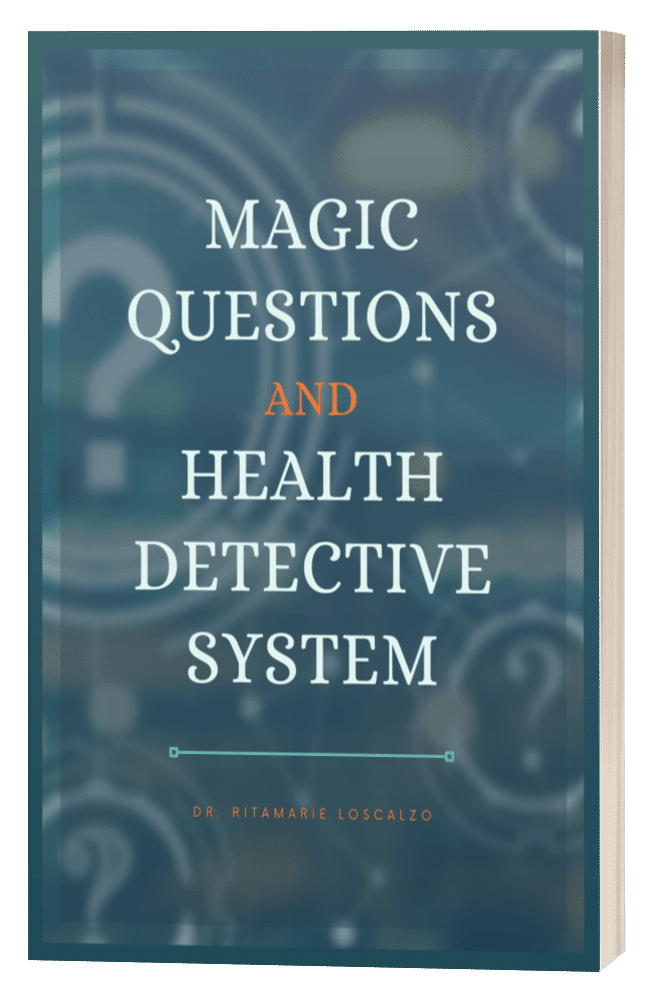

Healthy fasting blood sugar is around 80.
Diabetes is diagnosed when fasting blood sugar goes to 120 or above and is 140 or above after eating.
My blood sugar shot up to diabetic range!
And it stayed that way for several hours…
It was still higher than usual by the next morning —it was 106, which is considered insulin resistance territory.
With my family history of diabetes, insulin resistance, heart disease and cancer, what I did was downright dangerous.
By now you must be thinking “why the bleep did she eat a candy bar then? “ Well, the candy bar eating was actually not really related to food after all….
What really happened is that I got stressed. Very stressed. And angry. And I yelled. And I forgot all about going to the beach.
By now you must think I’ve gone off the deep end, with all the talk of candy bars and anger and the beach.
How does it all fit together?
It will become perfectly clear in a moment.
I didn’t actually eat a candy bar but my blood sugar went up as much as it would have if I had. I got stressed and my cortisol went up, which caused my muscles to be turned into blood sugar and my blood sugar to go up as if I had eaten candy – without the pleasure of actually eating it.
Usually, I manage my stress very well by taking mini vacations – to the beach. I visualize the ocean and the sand and the water and imagine myself bobbing up and down in the warm salty water and presto, the stress melts away and I am tingling and smiling ear to ear.
For some reason an argument with my husband on Friday morning caught me off guard and I forgot to go to the beach – and I paid the price big time.
According to Dr. Dwight Lundell, past Chief of Staff and Chief of Surgery at Banner Heart Hospital, Mesa, AZ, author of The Cure for Heart Disease and founder of the Healthy Humans Foundation that promotes corporate wellness, “When you spike your blood sugar level several times a day, every day, it is exactly like taking sandpaper to the inside of your delicate blood vessels.”
Wow.
That’s a powerful visual.
In his blog post on March 1st, 2012 he states that the biggest cause of inflammation is sugar, flour (and all the products made from them), and the excess consumption of omega-6 fats.
What he doesn’t mention, but is well known is that getting stressed is just as devastating for your body as eating those harmful foods!
Do You Eat Sandpaper for Breakfast?
You’re at risk if you eat processed foods, even the “health food kind.” Even whole grain muffins, breads, crackers, cookies and chips can elevate your blood sugar.
Fruit juice and dried fruits can cause blood sugar spikes. Even the sweeter fresh fruits can raise blood sugar in sensitive individuals.
If you start your day listening to the news or arguing with family members, you are likely causing a blood sugar spike even if you don’t eat these foods. Worse yet, if you do eat these things for breakfast, the effect is cumulative.
Excess blood glucose causes your blood cells to become sugar coated, stiff, and sticky — a process called “glycosylation”. Excess insulin causes excess fat, especially around your middle, which leads to inflammation. Glycosylated blood cells can damage your blood vessels, increasing inflammation and increasing your risk of heart attack and stroke.
In my experience, the incidence of blood sugar spikes and increased production of insulin is greatly underestimated and often overlooked.
How it may show up for many is:
Extra fat around the middle that just doesn’t seem to want to budge, in spite of long hours at the gym and serious calorie restriction.
- Inability to stay focused and alert, memory loss, and brain fog.
- Exhaustion and inability to fully engage with family and friends because there’s just no energy left after a full day at work.
- Mild to moderate depression, or lack of motivation.
- Food cravings, especially for sweets, breads and crackers, even after eating a full meal.
- Crankiness and irritability if there are more than a couple of hours between meals.
How You Can Stop Hurting and Start Healing
While Dr. Lundell focuses on the food, there are indeed other factors that contribute to the growing prevalence of blood sugar imbalance which includes hypoglycemia, hyperinsulinemia (high insulin), insulin resistance and diabetes.
Here are just a few lifestyle focuses that are important to address to maintain healthy blood glucose control:
- Stress. Under stress your body produces a hormone called cortisol whose job it is to give you the physical energy to run away from tigers. As I mentioned and exemplified by my recent experience, cortisol spikes can raise your blood sugar more than a candy bar! The problem is your stresses usually don’t require running and fighting, so all that sugar gets stored back into your cells as fat, thus increasing inflammation.
- Sleep. Lack of sufficient sleep interferes with fat burning and can cause insulin resistance in even healthy people.
- Fitness. Trained muscles are more sensitive to insulin and can burn the excess glucose before it becomes a problem.
- Timing of Your Meals. Eating late at night, skipping breakfast, or starting the day with carbs completely throws off your blood glucose and can lead to increased insulin levels. Spacing meals too close together leads to an all day, chronic elevation of insulin and all its side effects.
Glucose self-monitoring is by far the most effective and self-empowering tool at your disposal. It is also the most underutilized and poorly understood . There are also specific lab markers, in particular c-reactive protein (CRP), Hemoglobin A1C, and insulin that can help you assess the long term effect of out of control blood sugar.
There is also a quiz you can take to self assess:
https://drritamarie.com/wp-clone/go/InsulinQuiz
If you are one of the many who’ve tried everything: low fat diet, macrobiotics, raw food diet, low carb diet, and still did not get results, it’s possible that your blood sugar is out of control. It can be as a result of what you’re eating or any of the other factors described above: stress, poor quality sleep, lack of fitness or poor meal timing.
I love how Dr. Lundell explains what happens inside your arteries under chronic assault from high blood sugar and insulin levels.
“Take a moment to visualize rubbing a stiff brush repeatedly over soft skin until it becomes quite red and nearly bleeding. You kept this up several times a day, every day for five years. If you could tolerate this painful brushing, you would have a bleeding, swollen infected area that became worse with each repeated injury.This is a good way to visualize the inflammatory process that could be going on in your body right now… When you spike your blood sugar level several times a day, every day, it is exactly like taking sandpaper to the inside of your delicate blood vessels.”
I’ve seen miracles happen when blood sugar issues are addressed and brought into balance.
Nothing can take the place of working with someone who can support you every step of the way to restore your energy, health, and weight – the kind of support I offer in my B4 Be Gone Program.
Like Dr. Lundell points out in his blog post, blood sugar spikes may be costing you your life. Now is the time to take control and learn all you can about bringing this silent health saboteur, your blood sugar, under control.
With heart disease, stroke, diabetes and cancer all on the rise, it’s important to identify the underlying causes before it’s too late. And one of the key factors in keeping you safe from these life threatening conditions is keeping your blood sugar and insulin levels just right — not too much, not too little!
A belly-flattening, meal timing tip for you:
I want to share one of my favorite tips for keeping the extra pounds from creeping in around your waistline, and it has to do with how far apart you space your meals.
One of my Bye-Bye Belly Fat, Brain Fog, and Burnout video subscribers wrote and asked me why I was advising only 3 meals a day spaced 5-6 hours apart when she had at least 5 books on her shelf written by respected health educators telling her to eat frequent small meals.

So, while eating every couple of hours keeps your blood sugar from getting too low, it never allows for the rhythmic ebb and flow of insulin. It also causes your leptin and growth hormone levels to go down.
Since these hormones are involved in feeling satiated after meals and in fat burning, you’re shooting yourself in the foot when you eat every few hours.
The ideal meal spacing appears to be somewhere between 5 and 6 hours. You might be thinking, “I can’t go 5 hours without eating.” Of course you can’t NOW. You have faulty metabolic pathways that need to be repaired before you can space your meals optimally.
Eating every couple of hours may appear to “solve” your problem and keep your blood sugar even, but it’s really just masking the underlying issue. A balanced body can go 6 hours or longer without feeling faint or irritable.
My B4 Be Gone System gives you the steps to repair the underlying imbalances so you can keep your blood sugar nice and steady without the damaging effects of high insulin all day long. And I show you exactly how to gradually increase the length of time between meals so your energy also remains steady.
One of my clients went from having to eat every hour to easily going 5 hours between meals…within less than two weeks! And she finally dropped 12 of the pounds she’d been struggling to let go for years.
In my B4 Be Gone Program, I show you exactly how to restore the sensitivity of your cells to insulin so you can space your meals, burn more fat, lay down more muscle, and keep your energy and focus nice and steady all day long.
My candy bar eating days are over.
I gave up sugar many many years ago, yet my blood sugar still spikes whenever I stress out or miss a few nights of sleep.
Mastering all 5 lifestyle areas is the key to balanced blood sugar, avoiding the sand paper effect on the insides of your blood vessels.
I learned the hard way that it’s not enough to just eat right and exercise. Sleep, managing stress and meal timing are just as important.
Experience is the best teacher. And teaching this work to others helps me to master it. Except every now and then when I forget and “eat a candy bar” by stressing and skipping sleep. It’s a marathon not a sprint is what I tell my patients and students.
B4 Be Gone is my pride and joy and has helped many hundreds of people so far to reduce belly fat, banish brain fog, maximize their energy and stop the sandpaper effect on their blood vessels.
With much appreciation,
Comment Below: How did you rate on the Insulin Resistance Quiz? Did the results surprise you?
Share this:

Are you feeling stuck?
Do you feel as if something is missing from your practice that's keeping you from delivering breakthrough outcomes for your clients?.
Recent Posts
Our Programs
Nutritional Endocrinology Practitioner Training (NEPT)
The Mastery and Certification tier is our flagship program and provides everything you need to feel confident as a practitioner who knows how to get results that lead to healthy and happy clients.
Functional Assessment Mastery
Explore the relationships between the most important hormones and their relationship with nutrition.
Functional Nutrition Mastery
Learn how to support your clients to eat and supplement in a way that reduces and eliminates chronic symptoms.
Medical Disclaimer: The information on this website is not intended to replace a one-on-one relationship with a qualified health care professional and is not intended as medical advice. It is intended as a sharing of knowledge and information from the research and experience of Dr. Ritamarie Loscalzo, drritamarie.com, and the experts who have contributed. We encourage you to make your own health care decisions based upon your research and in partnership with a qualified health care professional.
Disclosure: Sometimes (but not always), when I share resources in my programs, newsletter, and on my website, I'm using an affiliate link, which means I do make money if you buy. My credibility is extremely important to me; therefore, I only endorse the products, services, and people I believe in. DrRitamarie.com is independently owned and the opinions expressed here are my own.
Click here to see our Privacy Policy.












